Can aquarium plants grow in sand? Aquatic plants are a great way to liven up your aquarium. They give the fish a place to hide and can provide a distraction from the boring walls of glass. Aquarium plants also provide oxygen for your fish and help keep your aquarium clean.
But what if you’re not sure whether or not your aquarium will have sand? If so, don’t worry! This article will explain everything you need to know about whether or not aquatic plant matter can grow in sand.
So you have decided to learn how to start an aquarium. Sand, gravel, and rocks—your substrate is placed directly on the tank’s bottom. It’s important because it provides a stable base for the rest of your tank to sit on.
But what about the other things you will be growing in your tank? AKA plants! Can aquarium plants grow in sand? With a few modifications, yes!
Growing plants in your aquarium is a great way to add color and life to an otherwise empty tank. Place the plant in the substrate, add nutrients, and it will start growing. Simple, right?
There are many ways to choose plants for a fish tank, but most of us want to make an aquarium ecosystem that is lush and doesn’t stay the same.
One of the most common questions we get about aquariums is how to grow plants in the tank. Let’s dive into this important topic.
Can aquarium plants grow in sand?
Can aquarium plants grow in sand? Yes, they can. However, they will not grow as well as if planted in substrate.Aquarium plants are not accustomed to living in a medium that is mostly sand and have to adjust their roots to deal with it.
It takes time for them to adapt their root systems for this type of environment, which means that you should be patient when you first start growing aquatic plants in a sand substrate tank.
It’s important to know that not all aquarium plants grow well submerged in a sandy substrate tank because the low organic content makes them struggle to find enough nutrients in such an environment.
However, there are some species of aquatic plants that do exceptionally well when planted directly into your aquarium’s sand bedding material, like Echinodorus heterophyllus (Amazon Sword Plant) and Cryptocoryne wendtii (Wendtii).
Cryptocoryne beckettii (Beckett’s Crypt) and Hygrophila polysperma (Water Wisteria) The Amazon Sword Plant, Echinodorus heterophyllus, is one of the most popular aquarium plants to grow in your tank because it can survive in a wide range of light and water conditions.
It’s also one of the easiest aquatic plants to care for. The Wendtii Sword Plant is another option that you should consider if you want to add an impressive green centerpiece to your aquarium setup.
The Wendtii Sword Plant is a dark-green aquatic plant that has thick leaves with rounded edges.
It has an upright growth habit and can reach up to six inches tall when planted in an aquarium with plenty of space for its roots. This plant prefers a sandy substrate tank that has low levels of nutrients but plenty of oxygen.
Read more articles: How Much Aquarium Salt per Gallon?
Points to keep in mind
- 1. Do aquatic plants prefer sand?
- 2. Aquarium plants that grow well in sand
- 3. How to plant aquatic plants in sand
- 4. What to consider when growing aquarium plants
- 5. Plants that will grow in sand
1. Do aquatic plants prefer sand?
Aquatic plants prefer sand as a substrate because it’s soft, easy for roots to grow in, and provides good drainage. In fact, aquatic plants will only grow in sand if the gravel has been removed.
So if you have gravel at the bottom of your aquarium, then you’ll need to remove it before planting your aquatic plants there.
But while some species can adapt to gravel (for example, Egeria densa), others will not do well with this type of substrate. This is due to the fact that they require softer soil than most gravels provide.
They’ll often snap off easily when planted in harder materials like rocks or stones, which aren’t ideal for supporting plant life. Sand is considered an ideal medium because it allows water to flow through it.
so that roots can take up nutrients more easily while also providing enough space between particles for oxygen exchange (which helps prevent root rot).
The only issue with sand is that it can be difficult to work with as a substrate. It’s very lightweight and tends to float, which makes its placement in an aquarium more challenging than other options like gravel or soil.
But if you’re willing to put in the time, then sand can be an ideal medium for growing aquatic plants. It’s much easier than soil because it doesn’t require any fertilizing or additional nutrients; just add water and you’re good to go!
Soil is often considered a good substrate for aquarium plants because it’s easy to work with and allows you to add nutrients to the water. However, soil has its own drawbacks:
It can be difficult for aquarium owners who don’t have any experience with plants or gardening since it requires regular maintenance (such as adding fertilizer) in order to keep your plants healthy.
Read more articles: Is Aquarium Water Good for Plants?
2. Aquarium plants that grow well in sand
Aquarium plants that grow well in sand are Anubias, Cryptocoryne, Cabomba, and Java moss. Hornwort and Bacopa will also do well, but they require more nutrients to survive than the other plants.
Vallisneria, Rotala, and Sagittaria species are not recommended for aquariums with substrate made of sand, as these are “lazy” plants that tend to grow very slowly in such tanks.
The best way to plant these plants is to use plastic tubes or pots. The tubes should be buried in the sand and filled with water, so that they act as miniature greenhouses for your plants.
You can also add some nylon thread to the tube and attach it to an anchor at the bottom of your tank so as not to lose it in the event of strong currents.
The pots should be placed on top of the substrate, with only their rims above the waterline. The plants will then grow through the holes in these pots and spread out over a large area.
You can also use pots to grow plants that would normally not be able to live in a tank with a substrate made of sand. These include floating plants such as hornwort and bacopa.
The best way to plant these plants is to use plastic tubes or pots. The tubes should be buried in the sand and filled with water, so that they act as miniature greenhouses for your plants.
You can also add some nylon thread to the tube and attach it to an anchor at the bottom of your tank so as not to lose it in the event of strong currents.
Read more articles: Is Aquarium Salt Safe for Snails?
3. How to plant aquatic plants in sand
Aquarium plants can be planted in different ways. The most common method is to use a potting mix, which can be purchased at garden supply stores or pet stores that sell aquarium supplies.
Another way of planting aquatic plants involves using sand itself and adding some gravel for extra texture, like the type of sand that you would find on a beach.
The method for planting in sand is different than planting in soil because sand does not have any nutrients to help nourish your aquatic plant as it grows. However, when using this method, there are some things that you should keep in mind:
Before you add your aquatic plant to its new home, make sure that everything has been cleaned thoroughly so there are no traces of dirt or leftover fertilizer from previous owners!
Also, make sure there aren’t any rocks or other debris at the bottom that could harm delicate roots later on.
Once you have a clean and clear tank, it’s time to add your aquatic plants! Use a medium-sized cup or scoop to place small amounts of gravel at the bottom of the tank.
This will help with drainage so that any excess water can easily flow out when needed. Next, add a layer of sand on top of the gravel and spread it evenly across the bottom of your aquarium.
When you’re done, your tank should look like this:
Now it’s time to add your aquatic plants! Use a medium-sized cup or scoop to place small amounts of gravel at the bottom of the tank. This will help with drainage so that any excess water can easily flow out when needed.
Next, add a layer of sand on top of the gravel and spread it evenly across the bottom of your aquarium.
Read more articles: 20 Gallon Aquarium Kit
4. What to consider when growing aquarium plants
To grow aquarium plants, you need to ensure that they have the proper amount of light, nutrients, and oxygen. You also need to make sure that they have carbon dioxide, water, and a substrate for their roots to grow into.
The proper amount of light is the most important factor in determining whether or not your plants will grow. The majority of aquarium plants require at least two to three hours of direct sunlight per day.
If your aquarium is not located near a window that receives direct sunlight, you may need to install some artificial lighting. This will give your plants the light they need, but it won’t work as well as natural sunlight.
The type of aquarium plant you have determines the amount of nutrients required by your plants.In general, though, you should add fertilizer to your tank once every two weeks or so.
If the leaves of your plants turn yellow and begin to fall off, then they are not receiving enough nutrients; if they are turning brown and dying from the tips down, then they are receiving too much.
The proper amount of oxygen and carbon dioxide is also important. If there is not enough oxygen in your tank, then the plants will begin to suffer from stress or die out completely.
To ensure that your plants have enough oxygen, you need to make sure that they are placed in an area where water circulation is good.
Read more articles: How Much Aquarium Salt per Gallon for Betta Fish?
5. Plants that will grow in sand
As you can see, there are a lot of plants that will grow in sand. It’s important to know which ones will thrive because that will help you make the decision on what type of aquarium-keeping system to use.
If you’re looking for some inspiration for your next planted tank setup, then here is a list of plants that do well in sand:
- Mosses: Java moss and water sprites
- Anubias, Cryptocoryne wendtii, and Lanceolata
- Amazon Sword (Echinodorus Amazonicus)
Final thought
As you can see, there are many benefits to growing aquatic plants in sand. If you’re looking for an alternative to gravel or soil for your aquarium plants, then sand may be the perfect choice for you!
Aquarium plants growing in sand with a little dedication on your part can be very rewarding. And as long as they are given low to moderate lighting, they will do fine in the sand.
Eventually, you will have a hard time deciding which fish to keep and which plants to buy because you will love them so much.
Most aquarium plants can grow in sand. The most important thing to remember when growing plants in aquariums is to provide them with plenty of light.
Aquarium plant growth can be enhanced by adding fertilizer, but if that isn’t an option, the plants should be fertilized on a regular basis with a liquid aquatic fertilizer designed for freshwater aquariums.
The other major consideration is making sure the water has been treated appropriately to avoid chlorine and ammonia buildup, which can taint the water and kill the plants.
Read more articles: How Much Aquarium Gravel Do I Need?
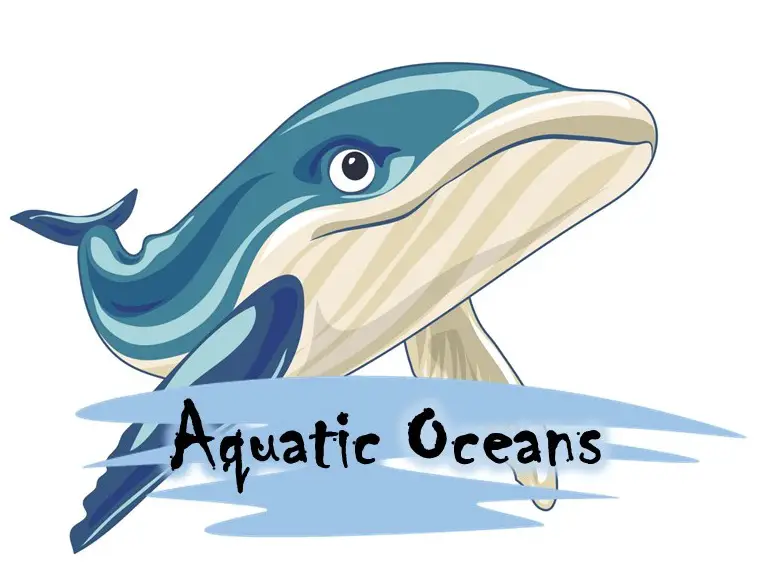

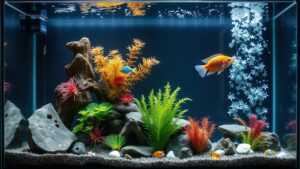

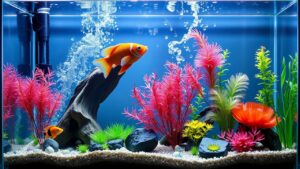

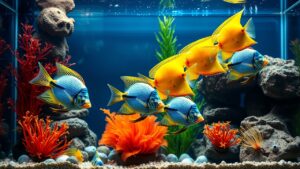


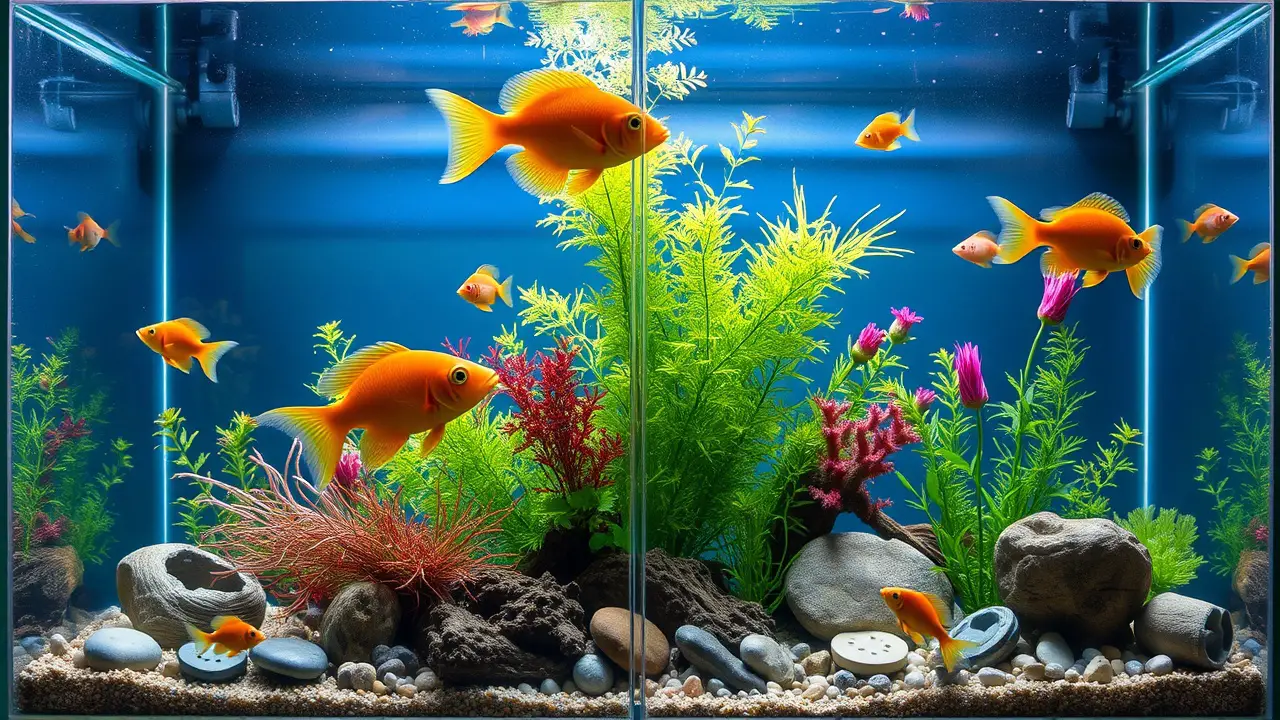

Leave a Reply